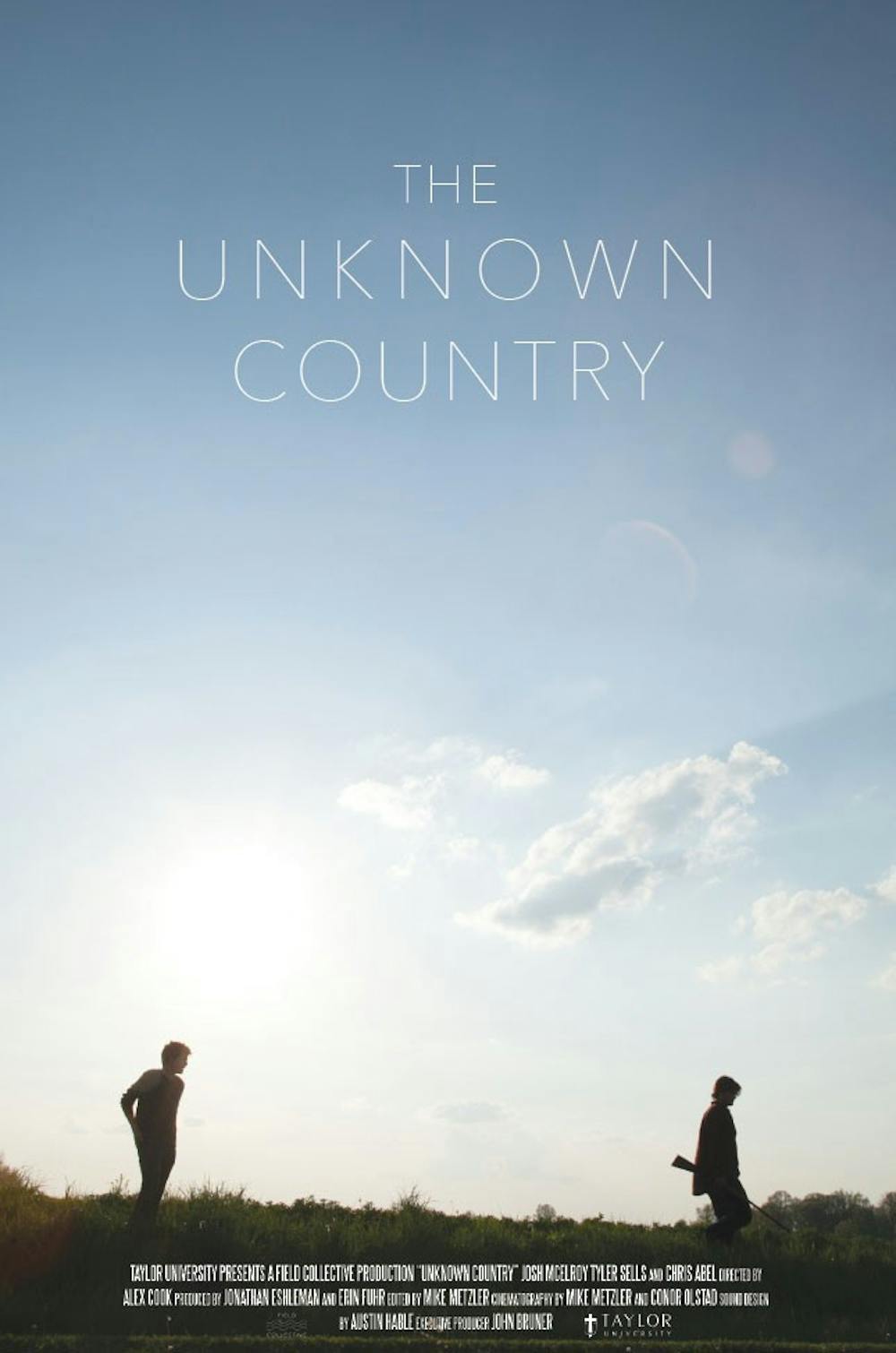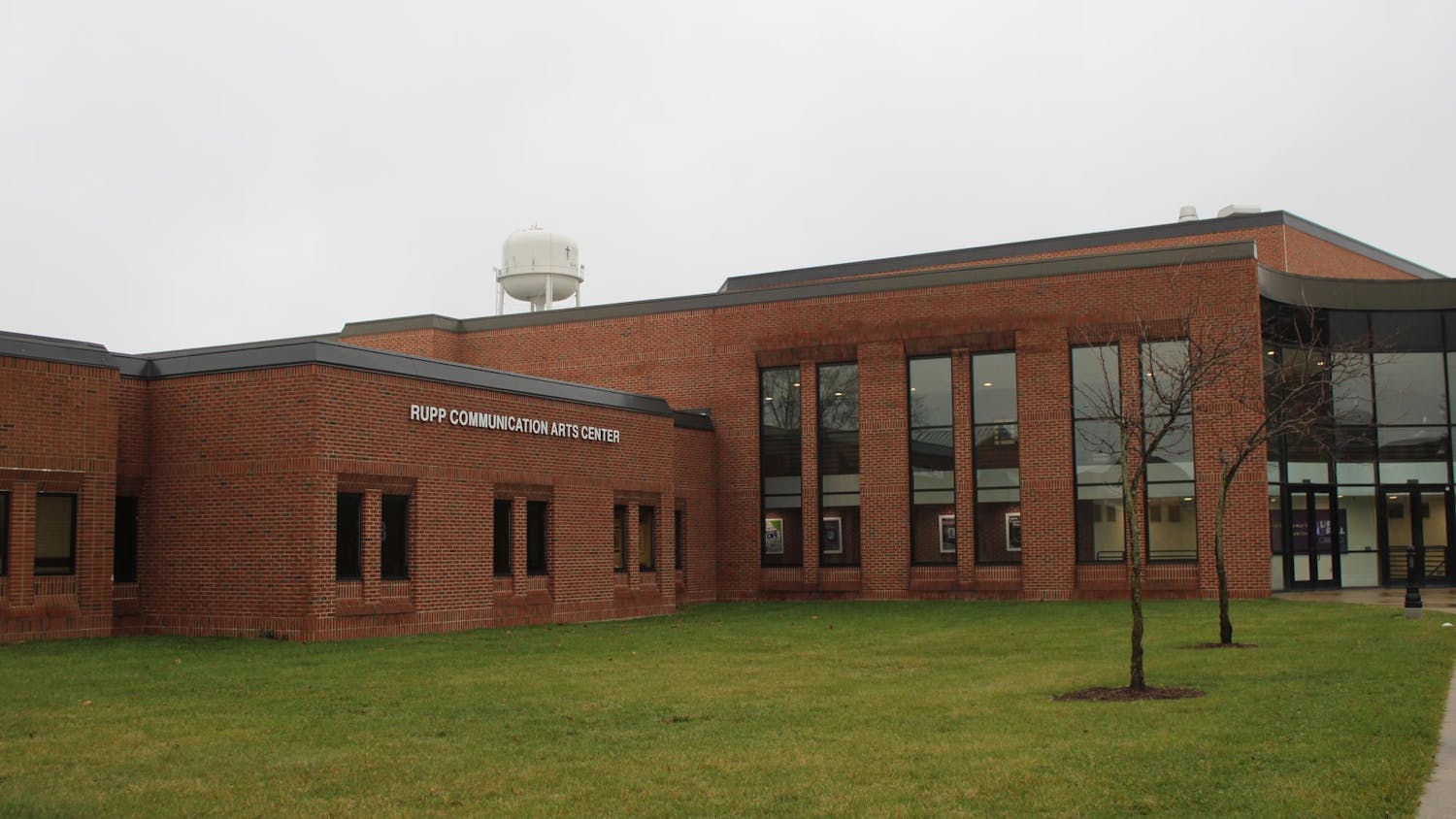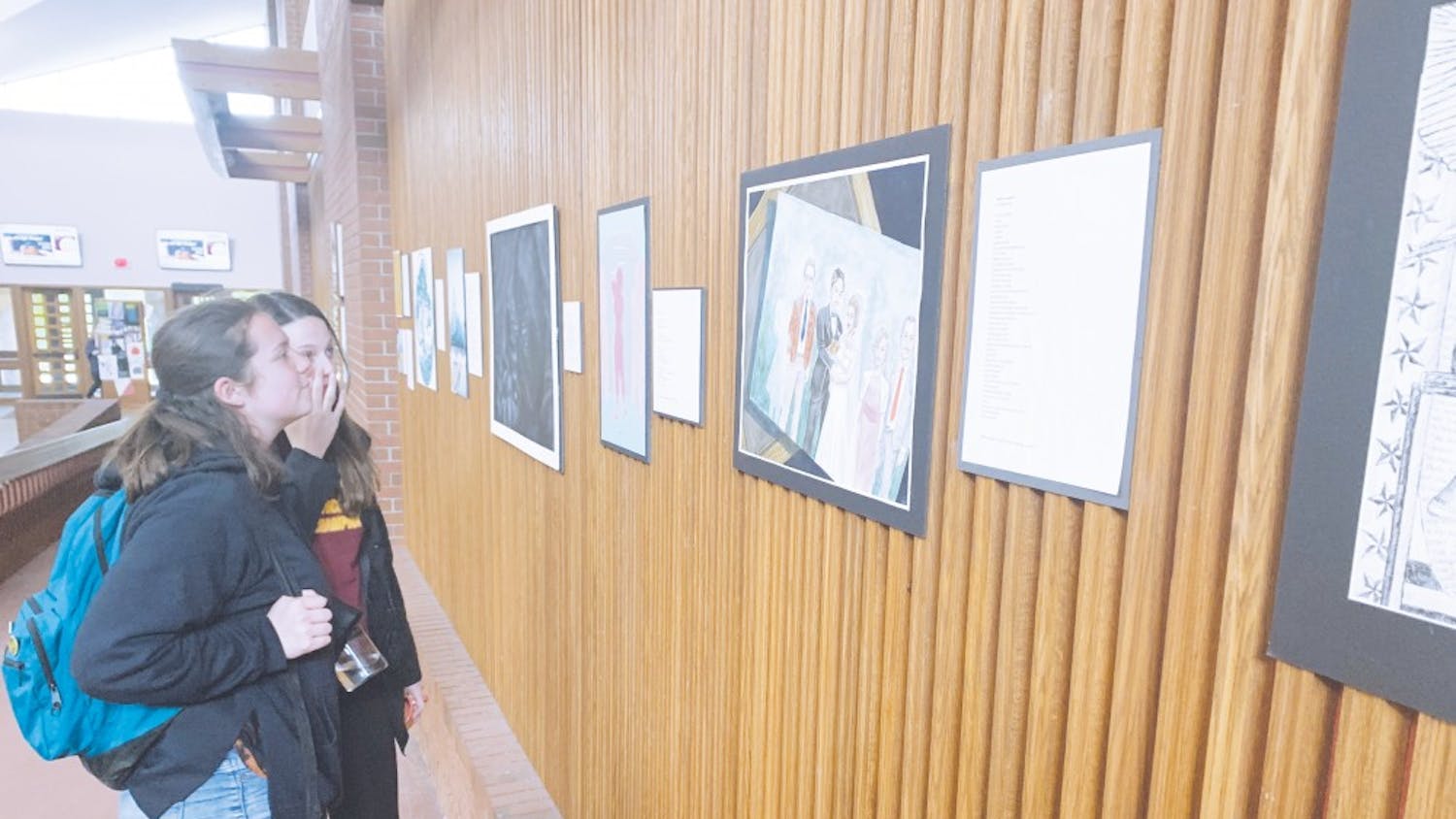By David Seaman | Echo
We want to be loved. We want to be accepted, encouraged and respected by others. Most of all, we--as human beings--want to have a sense of purpose in our lives. These themes interlock in the narrative filmmaking class' four short films.
On Saturday, the Media Communication Department will screen the short films created by the film students, who have been tirelessly working all semester for this moment. All of the all-nighters spent editing, audio sweetening and last-minute filming will pay off once these films are presented on the big screen. With luck, these films may end up in Taylor's Envision Film Festival next March.
Here's your first look at the four films these seniors have put their hearts into, which will be presented for free to the public tomorrow at 7 p.m. in Rediger.
"Providence"

"It only takes a conversation."
That's the tagline of "Providence," which follows a waitress struggling in the aftermath of her failed suicide attempt. After a five-minute conversation with a young slacker art student, both of their lives change in unexpected ways.
The idea of a simple, honest talk between two individuals drives the story of the film. "I really hope people will see that it really can take a single conversation to impact another person's life," said director Dane Soderquist. "You never know what impact your words and actions will have."
More than a single conversation was needed to create this short film. The group (which includes editor Caitlin Korshak, screenwriter Ben Dulavitch, cinematographer Zach Reiner and sound designer Josh James) chose to film in Warsaw, over an hour away from Taylor. Shooting the film required equipment, meals and lodging for entire weekends, according to producer and Warsaw native Kharis Schmidt.
"Everywhere we shot in Warsaw is a business who donated their space to us to contribute to the art scene in our town," Schmidt said.
Despite the simplicity of the film's narrative, the scale was larger behind the scenes.
"You can't just go out with a camera to shoot a scene anymore," Soderquist said. Film scenes as short as two minutes needed weeks of preparation, dozens of papers and a truck full of gear.
Overall, the process has been worth it for all members. Soderquist stated that his crew, which included sophomore script supervisor and director assistant Elyse Horb, were some of the best he has worked with. "I knew that every day I went to work it would be fun, collaborative, with a single goal in mind: getting the dang film finished on time."
The filmmakers hope the final production will resonate with people in all walks of life. Instead of creating a blatantly Christian film, the team was more interested in the subtlety of faith.
"Our characters are never portrayed as praying or seeing a light and accepting Christ to 'change their lives,'" said Schmidt. "But we have the opportunity to share the hope of Jesus through this film in a way a Christian film may not."
"What Used to Be"

A daughter unwillingly reconnects with her father in "What Used to Be." When Samantha (senior Jessi Butts) decides to spend her 20th birthday traveling cross country with her boyfriend (sophomore Andrew Davis), she stops in her hometown to retrieve her deceased mother's last personal possession. Here she must confront her distant father, with whom Samantha hasn't spoken to in years. Over the course of a day, the two begin to reconnect.
Like "The Unknown Country" (another of the narrative films), "What Used to Be" is ripe with family issues and viewing people from different perspectives. At the beginning of the film Samantha sees her father in a one-dimensional light, but as the story progresses she begins to understand more about who he really is.
Co-producer Sarah Topp hopes people will see the film as a reminder that no relationship is beyond repair. "We wanted our film to tackle a meaningful and realistic issue, but also provide the audience with hope," Topp said. "People we love can hurt us, but those wounds can be healed. In our film, we get a glimpse of that healing process."
Director Jay Miller admitted the biggest challenge was getting the story right.
"I never wanted to settle for anything uninteresting or that lacked a heart," Miller said. "Even when we had the idea, we took another month (or so) of finessing to make the story mold into something personal."
Besides Topp and Miller, the "What Used to Be" film crew includes co-producer Jake Rundell, cinematographer Levi Wortley, editor Trent Stegink and sound designer Doug Schaefer. The teamwork, dedication and collaboration each member put into the film is a testament to the relational aspect of the narrative.
Despite the emotional subject matter, Miller's first and foremost hope is that people will be entertained by "What Used to Be."
"Hopefully through its message, it will give people hope that relationships can be mended again with effort," Miller said. "If it moves people in any way and provides an outlet for what people have been through, then I will have done my job."
"One for the Mantel"
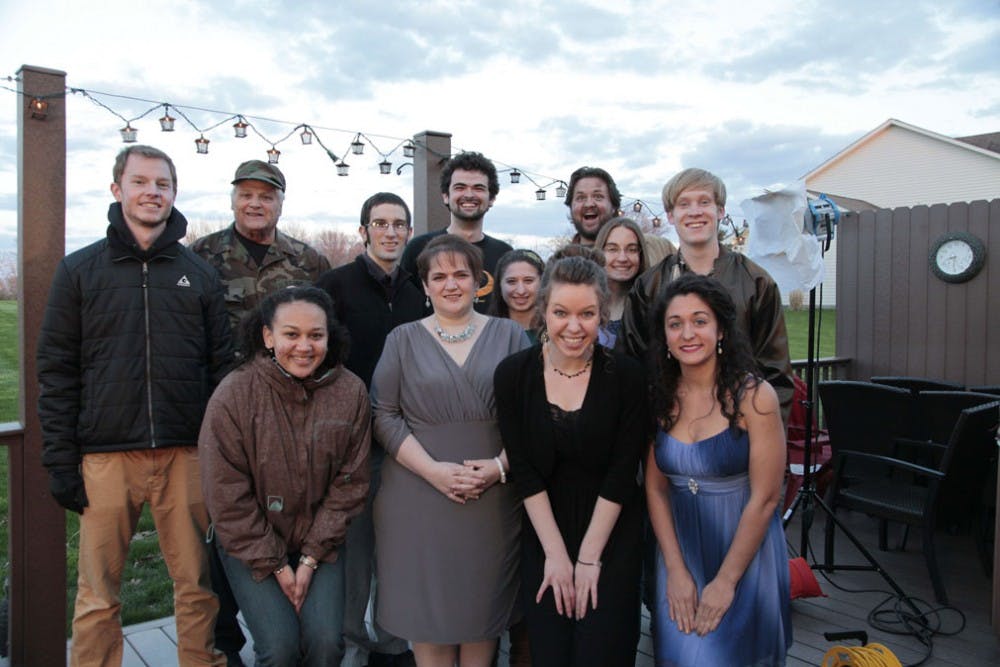
There's always something like a "Charlie" in a short film: a scene that has to be cut down for editing and continuity purposes.
"We had a scene that was way too long and had to go through a difficult revision process," said Cadeau Juraschek, editor of "One for the Mantel." "(Keith Cantrell) and I affectionately referred to this tricky scene as 'Charlie.' It was easier to avoid hating the work needed for that scene once we gave it an identity and a fun name."
The creativity and friendship of the cast and crew made filming "One for the Mantel" a fun experience, despite the occasional "Charlie." The unfortunate cutting of a favorite scene and adventures with spoiled food threatened to unravel the film. But through the tough situations, the filmmakers emerged as a family.
As it so happens, family is the theme of "One for the Mantel." The story follows a young woman pressured by her obsessive-compulsive mother to tie the knot. Desperate to get out her situation, the woman brings home a homeless man as her date to make a bad impression. Events take an unpredictable turn from there.
Crew members include director Cantrell, screenwriter/associate producer Luke Secaur, producer Chrissy Guglielmon, cinematographer Chris Hanson and sound designer Angel Cartwright. Cantrell, Juraschek, Guglielmon and Secaur have been working as a team since 2012, when they made a film for the first annual Red Eye Film Frenzy.
"Because we've had so many chances to work together, we know how to best rely on each other's strengths," Secaur said.
Working with the cast was also a huge positive for the group. "Each actor brought their unique brand of energy to the set, so we were never bored," Juraschek said. "By the time we wrapped, we felt like a family."
Because they became a family, the filmmakers hope the audience for "One for the Mantel" will gain a great appreciation for family as well.
"Admittedly, family is often messy," Juraschek said. "But our team believes that beauty can be found in even the messiest of moments."
"The Unknown Country"
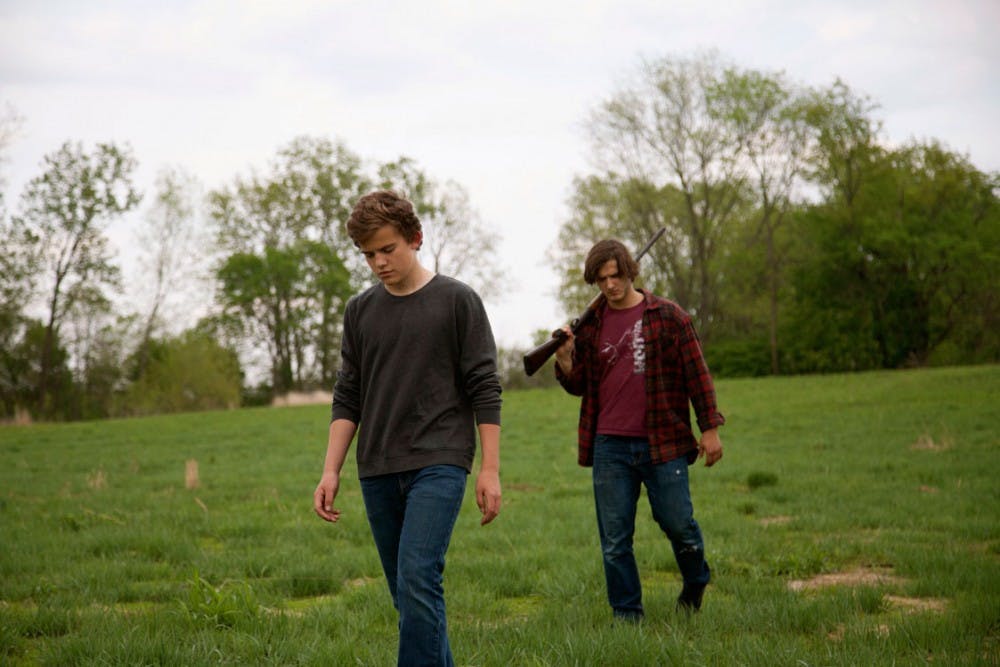
A foster grandparent's death forces two foster brothers (played by sophomore Josh McElroy and younger actor Tyler Sells) to make a rash decision to stay together in "The Unknown Country," another film rich in themes of family drama and tense relationships. Loosely based on one of the filmmakers' own life experiences, the film explores human identity and each person's own view of another.
"Taking a project from script to screen is a fantastically creative process," said co-producer Jonathan Eshleman. "I thrive in this type of collaborative, creative environment."
The partnership of crew and cast with strangers helped make "The Unknown Country" the film it is. Many days and nights were spent knocking on doors and making cold calls to strangers; a large number of people and professionals were needed for big, evocative scenes.
"Many turned us down, but when someone helps you realize your vision, it's so inspiring," Eshleman said. "Overall, no one can make an interesting film by themselves and must bend to the collaborative nature of filmmaking."
Joining Eshleman in this vision are director Alex Cook, co-producer Erin Fuhr, editor/cinematographer Mike Metzler, cinematographer Conor Olstad and sound designer Austin Hable. There were challenges in the production: 30-plus hours per week were needed to meet deadline, and permissions for shoots fell through at times. But dead ends also led to openings. Last-minute shoots led to incredible scenes, including one near the end the film students wish to keep secret until screening.
In the end, the crew's biggest wish is that people to walk away from "The Unknown Country" wanting more. "I want people to forget they're watching a film," Eshleman said. "I want them to be in the film."

